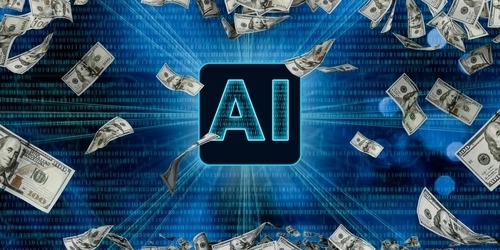The Next Phase of AI: From Models to Real-World Applications
By Zain Jaffer
The recent launch of DeepSeek’s R1 has stirred up the AI industry, shedding light on emerging trends and signaling a shift away from the race to build foundational models. While DeepSeek’s large language model (LLM) has made quite an impression, its long-term impact on the market remains uncertain. Will it revolutionize the sector or simply create a temporary wave? Time will tell.
Meanwhile, prominent companies like OpenAI and Anthropic are directing their ambitions toward artificial general intelligence (AGI), where LLMs will play a critical role. But let’s face it: mere advancements in LLMs won’t cut it in the journey toward AGI. The focus has shifted; it’s no longer just about building bigger and better models but rather about harnessing AI to create impactful real-world applications. The winners in this next chapter will be those who innovate AI-native solutions that can truly transform industries.
Infrastructure to Application: A New Era
Every technological revolution follows a familiar trajectory. Initially, we see significant investment in infrastructure—laying the groundwork for future advancements. As the technology matures and becomes widely accessible, the competitive edge shifts from those developing the tools to those employing them most effectively.
What notable changes can we expect as we navigate through this evolution?
The Decline of Traditional SaaS
Software as a Service (SaaS) is rapidly losing its relevance in its current form. Microsoft CEO Satya Nadella hinted at this trend in a December 2024 interview, expressing concerns that conventional enterprise software could eventually become obsolete. The reason? AI agents are increasingly capable of handling workflows without requiring human oversight. We are approaching a future where AI-driven platforms won’t merely assist in tasks but will manage entire workflows, such as negotiating contracts, managing customer support, and streamlining supply chains—automatically.
A $10 Trillion+ Transformation in the Services Economy
The services sector, valued at an impressive $24 trillion, presents a golden opportunity for AI-driven automation. We can expect significant changes across various careers, especially in industries such as marketing and sales. With sufficient innovation, AI’s influence will extend into more regulated fields like law, accounting, and banking. As AI becomes smarter and more cost-effective, many professional services will undergo a structural overhaul.
Approaching the Singularity
Some industry veterans believe we’re on the cusp of “the singularity,” a point at which AI surpasses human intelligence and catalyzes groundbreaking discoveries. If this shift happens soon, its ramifications across critical scientific domains could be enormous. In healthcare, for instance, we could witness accelerated drug discoveries, AI-based diagnostics, and improved predictive and preventative care. Additionally, advancements in genetic engineering may extend human lifespan as AI analyzes vast biological datasets to unlock cures for previously untreatable diseases.
Beyond healthcare, AI is poised to revolutionize industries like energy, materials, and space exploration. Consider AI-enhanced battery storage making renewable energy more efficient, or AI-designed materials paving the way for lighter, stronger, and more durable constructions. Reaching singularity within this decade could redefine not just intelligence but the realm of possibilities.
What Companies Should Prioritize to Stay Ahead
As we enter this transformative phase of AI adoption, organizations must exhibit proactive leadership to remain competitive. Based on lessons learned from previous tech advancements, here’s what today’s leaders should focus on:
Embrace the Shift from SaaS to AI-Native Solutions
Stop viewing software merely as tools for humans; it’s time to pivot toward AI-driven services that take autonomous action. This moment calls for a shift away from traditional software licenses and user seat models, urging leaders to design systems allowing AI to automate entire workflows.
Rethink Hiring and Organizational Structures
The classic Fortune 500 model—where large teams handle finance, HR, legal, and operations—is becoming outdated. AI-powered companies will necessitate leaner teams with fewer human employees overseeing AI-driven departments. Rethink hiring practices to prioritize AI-native talent, skilled in training and optimizing AI agents.
Adopt a Start-Up Mentality
In the rapidly evolving world of AI, agility is essential. Large enterprises that rely on lengthy innovation cycles risk falling behind nimble startups willing to iterate in weeks. Leaders should foster a “test-and-learn” approach—deploying AI early, gathering feedback, and refining solutions to gain competitive advantages.
Rethink AI’s Role
AI is so much more than just a productivity tool! Many businesses still view AI merely as a means to enhance efficiency, but that’s only scratching the surface. Just as mobile technology redefined existing platforms, AI will create solutions we’ve yet to envision. Visionary leaders should ask themselves: “If my industry were starting fresh today, how would AI reshape it from the ground up?”
Forge AI Partnerships
No single company can succeed in isolation. The most successful businesses will integrate into AI ecosystems, collaborating with AI-native startups, research institutions, and infrastructure providers. This collaboration is crucial for accessing cutting-edge AI models, embedding AI in supply chains, and developing solutions collectively.
AI’s evolution is now entering a more pragmatic, results-oriented phase. Companies that seamlessly weave AI into their organizational fabric, rather than treating it like a side project, will emerge as the leaders of the next decade.
The AI Buzz Hub team is excited to see where these breakthroughs take us. Want to stay in the loop on all things AI? Subscribe to our newsletter or share this article with your fellow enthusiasts.




